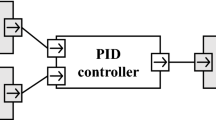Abstract
In ISO 26262, safety requirements are constructed step by step. The construction is started to set safety goals to be achieved in a system up, then they are refined into hardware and software requirements which the system consists of. Such stepwise construction of the safety requirements provides traceability among them and allows us to confirm that the system surely realizes the goals. The traceability also helps us to exhaustively extract requirements which are necessary to achieve safety. On the other hand, the quality of a document describing them is important to obtain those merits. If the document contains ambiguities, contradictions and many of requirements are missed, those lead to the unsafety of the system. In fact, we found many of missing implicit assumptions and ambiguous requirements by analyzing a document which describes safety requirements. To solve this problem, we proposed a method to describe the safety requirements based on the goal tree of KAOS and its patterns. We confirmed the effectiveness of the method by applying it to an electronic power steering system as a case study. In this paper, we show the case study which is not trivial but a real system in addition to the proposed method.
Access this chapter
Tax calculation will be finalised at checkout
Purchases are for personal use only
Similar content being viewed by others
References
ISO 26262 Road vehicles - functional safety (2011)
IEC 61508: Functional safety of electrical/electronic/programmable electronic safety-related systems (1998)
van Lamsweerde, A.: Requirements Engineering: From System Goals to UML Models to Software Specifications. Wiley, New York (2011)
Broy, M., Kruger, I.H., Stauner, T.: Software engineering for automotive systems: a roadmap. In: Future of Software Engineering, pp. 55–71 (2007)
Weaver, R.A., Kelly, T.P.: The goal structuring notation-a safety argument notation. Workshop on Assurance Cases, Dependable Systems and Networks (2004)
Denney, E., Pai, G., Whiteside, I.: Formal foundations for hierarchical safety cases. In: High Assurance Systems Engineering, pp. 52–59 (2015)
Denney, E., Pai, G.: A formal basis for safety case patterns. In: Bitsch, F., Guiochet, J., Kaâniche, M. (eds.) SAFECOMP. LNCS, vol. 8153, pp. 21–32. Springer, Heidelberg (2013)
Kelly, T.P., McDermid, J.A.: Safety case construction and reuse using patterns. In: Daniel, P. (ed.) SAFECOMP, pp. 55–69. Springer, London (1997)
Rubio-Loyola, J., Serrat, J., Charalambides, M., Flegkas, P., Pavlou, G.: A functional solution for goal-oriented policy refinement. In: Policies for Distributed Systems and Networks, pp. 133–144 (2006)
Dwyer, M.B., Avrunin, G.S., Corbett, J.C.: Patterns in property specifications for finite-state verification. In: International Conference on Software Engineering, pp. 411–420 (1999)
Darimont, R., van Lamsweerde, A.: Formal refinement patterns for goal-driven requirements elaboration. ACM SIGSOFT Softw. Eng. Notes 21(6), 179–190 (1996)
Abrial, J.R.: Modeling in Event-B: System and Software Engineering. Cambridge University Press, Cambridge (2010)
Jones, C.B.: Systematic Software Development using VDM, 2nd edn. Prentice Hall International, Upper Saddle River (1990)
Spivey, J.M.: The Z Notation: A Reference Manual. Prentice-Hall, New York (1992)
Gamma, E., Helm, R., Johnson, R., Vlissides, J.: Design Patterns - Elements of Reusable Object-Oriented Software. Pearson Education, London (1995)
Minisat: http://minisat.se/
Author information
Authors and Affiliations
Corresponding author
Editor information
Editors and Affiliations
Rights and permissions
Copyright information
© 2016 Springer International Publishing Switzerland
About this paper
Cite this paper
Aoki, T., Traichaiyaporn, K., Chiba, Y., Matsubara, M., Nishi, M., Narisawa, F. (2016). Modeling Safety Requirements of ISO26262 Using Goal Trees and Patterns. In: Artho, C., Ölveczky, P. (eds) Formal Techniques for Safety-Critical Systems. FTSCS 2015. Communications in Computer and Information Science, vol 596. Springer, Cham. https://doi.org/10.1007/978-3-319-29510-7_12
Download citation
DOI: https://doi.org/10.1007/978-3-319-29510-7_12
Published:
Publisher Name: Springer, Cham
Print ISBN: 978-3-319-29509-1
Online ISBN: 978-3-319-29510-7
eBook Packages: Computer ScienceComputer Science (R0)




